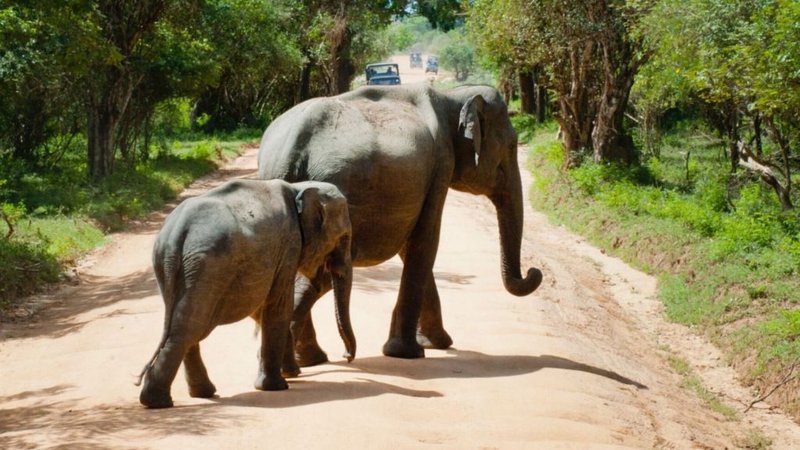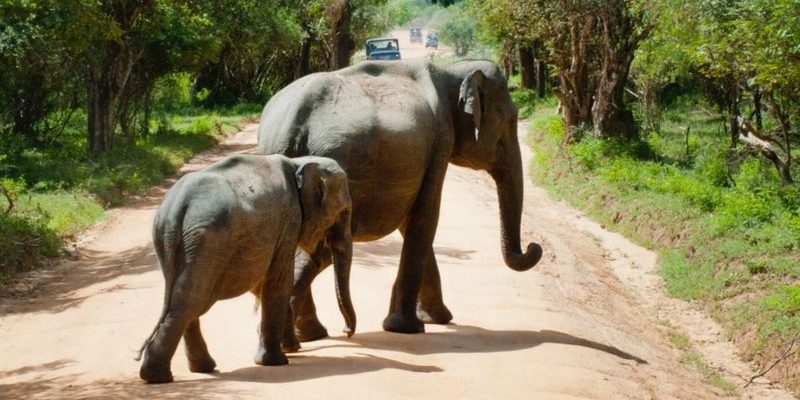
Encountering an Indian elephant in its natural habitat isn’t just a rare experience; it’s an opportunity to witness one of nature’s finest spectacles. However, it can also turn into a dangerous encounter if you’re not prepared. Let’s walk through some essential tips and insights on how to handle this situation safely, ensuring that both you and the elephant can coexist peacefully in the wild.
Understanding Indian Elephants and Their Behavior
Before you venture into their territory, it’s crucial to understand their behavior. Indian elephants are social and typically live in herds led by a matriarch. They are usually calm and gentle, but like any wild animal, they can react defensively if they feel threatened. Imagine being in a crowded room full of friends, but suddenly, someone intrudes and makes you feel uncomfortable. That’s how an elephant might feel when encountering humans unexpectedly.
Elephants communicate in ways we can’t always see—through rumbles, touching, and even vibrations. If you’re observing from a distance, watch for their body language. Flapping ears can mean they’re agitated, while relaxed posture suggests they’re at ease. If you notice any signs of stress or agitation, it’s best to keep your distance and assess the situation.
Stay Calm and Observe
If you encounter an Indian elephant in the wild, the first thing to remember is to stay calm. This can be tough, especially as your heart races, but panicking won’t help anyone. Think of it like being on a rollercoaster—you can’t change the ride, but you can control your reaction.
Take a moment to observe the elephant from a safe distance. Make sure you’re at least 100 feet away. This distance allows you to appreciate their beauty without endangering yourself or the elephant. Keep your voice low and avoid sudden movements. Elephants, much like toddlers, can be sensitive to loud noises and abrupt actions.
Also, avoid direct eye contact, as this can be perceived as a threat. Instead, you can glance sideways while keeping your focus on the ground or other parts of the environment. This way, you can keep an eye on the elephant without provoking it.
Maintain a Safe Distance
Maintaining a safe distance from these magnificent creatures is key. While you might be tempted to get closer for a better photo opportunity, getting too close can provoke an aggressive response. Think of it as a personal bubble; everyone has one, including elephants.
If you’re hiking or on a safari, the best practice is to follow any guidelines provided by your guide or local authorities. They know the terrain and the animals well. If you’re in a vehicle, keep the windows closed and refrain from leaning out. Just like you wouldn’t want to poke a sleeping bear, it’s wise to respect the space of an Indian elephant.
Know When to Retreat
If the elephant displays signs of aggression, such as trumpeting, charging, or flapping its ears, it’s time to retreat. Don’t hesitate; simply back away slowly without turning your back to the elephant. It’s like walking away from a heated argument—keeping your composure is vital.
Make your exit quietly and calmly. Sudden movements or loud noises could provoke the elephant further. If you’re in a group, ensure everyone remains together and moves away as a unit. Remember, safety in numbers!
Understanding Local Laws and Guidelines
Before heading into the wild, familiarize yourself with local laws and guidelines regarding wildlife encounters. Many national parks or reserves have strict rules about how to behave around elephants and other wildlife. It’s like having a roadmap before starting a journey; it prepares you for what to expect.
Check for information from park guides, visitor centers, or official websites. They often provide tips on how to enjoy the experience while staying safe. Following these guidelines not only keeps you out of trouble but also helps protect the elephants and their habitat.
Leave No Trace
In addition to knowing how to behave around elephants, it’s essential to remember the principle of “Leave No Trace.” This means you should never feed wildlife, litter, or disturb their natural environment. Elephants that become accustomed to human food can lose their natural foraging skills, which is detrimental to their survival.
Make sure to pack out everything you bring in; any wrappers or leftover food should go back with you. It’s a bit like cleaning up after a picnic—leaving the site as beautiful as you found it helps protect these incredible animals and their habitats for future generations.
Appreciate the Moment
Finally, after navigating the encounter, take a moment to appreciate the beauty of nature around you. Watching an Indian elephant is a once-in-a-lifetime experience for many. Reflect on the grace of these creatures and feel grateful for the opportunity to witness such a magnificent part of our world.
Whether it’s the rustle of leaves or the distant sound of the jungle, soak it all in. Nature has a way of grounding us and reminding us of our connection to the earth and its creatures.
In conclusion, encountering an Indian elephant in the wild can be exhilarating, but it’s essential to approach the experience with respect and caution. By understanding their behavior, maintaining a safe distance, and following local guidelines, you can enjoy this incredible moment while ensuring the safety of both yourself and these majestic animals. So, the next time you’re out in the wild, remember these tips, and you’ll be ready for a truly unforgettable experience.

